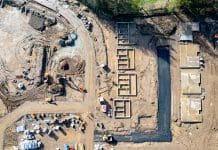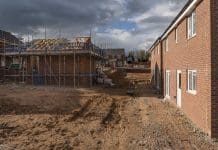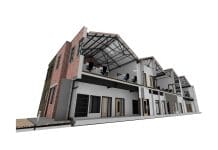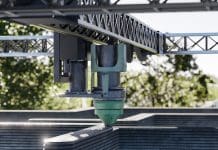A major modernisation programme has started at the British Antarctic Survey’s Rothera Research Station to prepare for the arrival of the RRS Sir David Attenborough in one of the most challenging construction environments on Earth
A 40-plus team from BAM Nuttall arrived in December to resume construction of a 74m wharf and carry out initial groundworks for the new 2,700 sq m science and operations building to berth the RRS Sir David Attenborough.
Preparing the research station to berth the RRS Sir David Attenborough, which will be one of the most advanced polar research vessels in the world, is a complex tax. In this summer season of work, the remaining 14 of 20 steel frames that form the wharf’s skeleton will be put in place and backfilled with rock.
There will also be a crane for easier launching of small boats, a personnel gangway and a floating pontoon for the deployment of scientific instruments.
Antarctic Infrastructure Modernisation programme
A key aim of the modernisation programme is to reduce the station’s consumption of fossil fuels and introduce more energy efficient systems, including heat recovery generators, photovoltaic solar panels and enhanced insulation.
Antarctica is the highest, driest, coldest and windiest place on the planet. Construction work can only take place during a short period in the austral summer (November to May).
Martha McGowan, project manager at BAM, said: “It will be a busy season but we recognise the importance of our projects in helping BAS continue to deliver frontier science.”
David Seaton, senior infrastructure programme manager at the British Antarctic Survey, added: “After many months of planning, we are looking forward to achieving to key milestones at Rothera. There two projects – the wharf and modernisation – are critical to reducing operating costs, improving efficiency and keeping the research stations meeting the needs of BAS personnel to facilitate world-leading research for the future.”
The Antarctic Infrastructure Modernisation programme is commissioned by UKRI-NERC (Natural Environment Research Council). It operates on a partnership model that includes technical adviser Ramboll, construction partner BAM and designer Sweco. The programme is expected to last between seven and 10 years and is worth an estimated £100m.





![[VIDEO] GBC network calls for boldness at COP29 Baku, Azerbaijan, where COP29 will take place and where the GBC Network have deirected their message](https://www.pbctoday.co.uk/news/wp-content/uploads/2024/11/iStock-513054348-1-218x150.jpg)


![[VIDEO] Skanska to build £197m BREEAM office buildings in South Molton View of 40-46 Brook Street, nearby where Skanska will be working](https://www.pbctoday.co.uk/news/wp-content/uploads/2024/11/200421_GDS_Cam006_HG_001-scaled-1-218x150.jpg)


![[VIDEO]With cable theft on the rise, how can you protect your construction site? Copper wire rod non-ferrous metals, product metal industry, representing construction cable theft](https://www.pbctoday.co.uk/news/wp-content/uploads/2024/10/iStock-2167549051-218x150.jpg)

